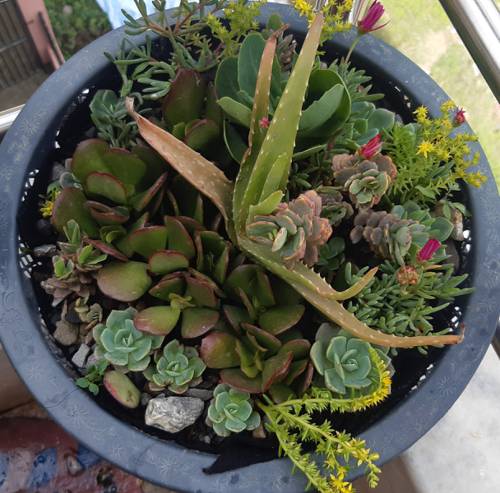
FAQ About Air Circulation for Indoor Plant Health

Why is air circulation important for indoor plant health?
Proper air circulation is crucial for indoor plant health because it helps regulate humidity levels, prevents the growth of mold and mildew, and assists in the even distribution of carbon dioxide. Without adequate airflow, plants may become susceptible to diseases, fungi, and pests due to stagnant air conditions. Additionally, good air movement can promote stronger stem growth and healthier overall development.

How can I improve air circulation for my indoor plants?
To improve air circulation, consider placing a small fan near your plants to gently move the air around. Ensure that the fan is not too strong and is positioned to provide an indirect flow rather than blowing directly on the plants. Additionally, spacing plants adequately apart allows air to circulate between them, reducing the risk of mold and mildew. Opening windows and doors occasionally can also help increase the flow of fresh air indoors.

Can poor air circulation harm my indoor plants?
Yes, poor air circulation can harm indoor plants by creating a conducive environment for the development of diseases such as powdery mildew, root rot, and other fungal infections. Stagnant air can also lead to higher humidity levels and the accumulation of dust on plant leaves, which can block sunlight and impair photosynthesis.

What are signs of poor air circulation in indoor plants?
Signs of poor air circulation include the presence of mold or mildew on the soil surface or plant leaves, yellowing or wilting foliage, and an increase in pest infestations like fungus gnats. Additionally, you might notice a musty smell or a consistent presence of condensation on windows near the plants.

How does air circulation affect humidity levels for indoor plants?
Air circulation plays a significant role in regulating humidity levels around indoor plants. Good airflow helps disperse excess moisture, preventing overly humid conditions that can lead to mold growth and fungal diseases. Conversely, it can also prevent the environment from becoming too dry, which might cause dehydration in plants.

Do all indoor plants require the same level of air circulation?
No, different indoor plants have varying air circulation requirements. Some tropical plants, like ferns and orchids, prefer higher humidity and might not need as much air movement, whereas succulents and cacti thrive in dryer conditions with more airflow to prevent rot. Understanding each plant’s native habitat can help you adjust air circulation appropriately.

Are there specific times when increased air circulation is more beneficial for plants?
Increased air circulation is particularly beneficial during warmer months or when indoor heating is used, as these conditions can raise indoor humidity levels. During these times, air circulation helps prevent the overheating of plants and maintains a balanced moisture level. Additionally, after watering or misting plants, increasing airflow can help dry excess moisture and prevent fungal growth.

How do I balance air circulation without causing drafts for my indoor plants?
To balance air circulation without causing drafts, use fans on a low setting or oscillating mode to provide gentle air movement. Ensure fans are positioned to blow around the plants, not directly at them. Consider using ceiling fans on a low setting or strategically opening windows and doors to create a natural, gentle airflow that minimizes drafts. Additionally, monitor your plants for signs of excessive air movement, such as leaf curling or drying.

Can air purifiers affect the air circulation for indoor plants?
Air purifiers can positively affect air circulation for indoor plants by reducing airborne pollutants and allergens, which contributes to a healthier environment. However, they do not provide the air movement required for proper circulation. Using air purifiers in conjunction with fans can enhance indoor air quality while ensuring adequate airflow for plant health.

What role do oscillating fans play in air circulation for plants?
Oscillating fans are excellent for promoting air circulation around indoor plants as they provide a gentle and variable air flow that helps mimic natural wind patterns. This type of fan reduces the likelihood of any single spot in the room becoming too moist or stagnant, thereby assisting in the prevention of mold, mildew, and pests. Oscillating fans also help evenly distribute temperature and humidity levels around clusters of plants.

Is it necessary to change the position of fans based on the type of plants?
Changing the position of fans based on plant types can be beneficial, particularly if you have a diverse collection of plants with different air circulation needs. For instance, plants that require high humidity like ferns can be placed further from fans, whereas succulents might benefit from being closer to ensure they have enough dry air movement. Adjustments can help maintain optimal conditions tailored to each plant type's requirements.

How can plant arrangement impact air circulation?
Plant arrangement can significantly impact air circulation. Placing plants too closely together may impede airflow and create microenvironments with higher humidity levels, which can lead to increased risk of disease. Arranging plants with adequate spacing allows air to flow freely around and between them, ensuring that moisture is less likely to settle and cause problems.

What is the impact of air circulation on pest control for indoor plants?
Good air circulation can aid in pest control by creating a less favorable environment for pests to thrive. Stagnant air can lead to a buildup of moisture which encourages pest infestations such as fungus gnats and mealybugs. Continuous air movement helps keep humidity levels balanced, reducing the chances of pest outbreaks.

Does air circulation affect the growth rate of indoor plants?
Proper air circulation can positively affect the growth rate of indoor plants by improving their ability to photosynthesize efficiently. Good airflow enhances carbon dioxide exchange and promotes stronger stem and leaf development, which in turn can lead to healthier and potentially faster growth. Plants in stagnant environments often experience slower growth and weaker structural integrity.

Can lack of air circulation cause leaf drop in indoor plants?
Lack of air circulation may lead to conditions such as high humidity or pest infestations, and these stress factors can cause leaf drop. Without proper airflow, plants can also experience nutrient deficiency, fungal infections, and conditions such as root rot, all of which can contribute to a plant losing its leaves prematurely.

How do I test if the air circulation is adequate for my indoor plants?
To test if air circulation is adequate, observe your plants for any signs of stress or disease, such as mold, mildew, yellowing leaves, or wilting. You can also monitor temperature and humidity levels using a hygrometer. Additionally, checking for stagnant areas using an anemometer, which measures wind speed, can help you determine if airflow is reaching all parts of your indoor plant setup effectively.

How can lighting impact air circulation for indoor plants?
Lighting can influence the temperature and consequently impact air circulation. Intense lighting, particularly during summer, can increase the temperature in a room, often requiring more airflow to maintain suitable conditions for plants. However, direct light can also dry out air excessively; thus, it's essential to find a balance between lighting and air movement to avoid stress on the plants.

Should I open windows to improve air circulation for plants in winter?
While opening windows can improve air circulation, it is essential to be cautious during winter. Cold drafts can stress plants by rapidly cooling the environment around them. Instead, consider using fans to gently circulate indoor air or opening windows selectively during warmer days, ensuring that you maintain optimal temperature and humidity levels for your plants.

What is the connection between air circulation and plant transpiration?
Air circulation enhances plant transpiration by facilitating the movement of water from the plant's leaves into the air. This process is crucial for nutrient uptake and cooling of the plant as it helps transport water from the roots to the leaves. Good airflow ensures that the evaporated moisture does not saturate the surrounding air, allowing for continual transpiration, which supports optimal plant health.

How can I use smart home technology to manage air circulation for my indoor plants?
Smart home technology can be employed to manage air circulation by using smart plugs or smart fans that can be controlled remotely through apps or scheduled to operate at certain intervals. Advanced systems can include sensors that monitor humidity and temperature levels, automatically adjusting airflow to maintain desired conditions for plant health. These technologies allow for more precise and automated management of the indoor environment.
